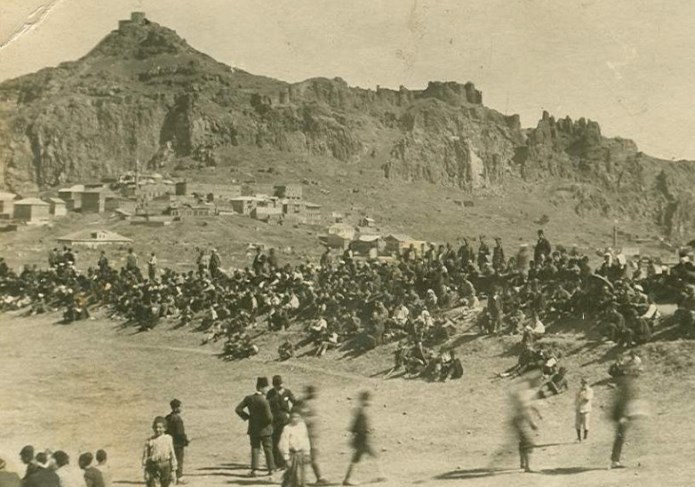In the early XX century, the best part of the Azerbaijani population were expelled from the present-day territory of Armenia following the ethnic conflict between Armenians and Azerbaijanis and as a result of the ethnic cleansing carried out by Armenian nationalists. In mid 1918, the Armenian armed groups led by Andranik played a significant role in the destruction of the Muslim villages in Zangazur as well as in the ethnic cleansing of the region.
The British command with own political purposes did not let Andranik to spread his activities to Karabakh. Andranik brought 30,000 Armenian refugees from the eastern Anatolia, mainly from Muş and Bitlis. A part of the Armenians from Turkey remained in Zangazur and the rest replaced Muslims expelled from Iravan (Yerevan) and Daralayaz in order to make the key regions of the Armenian state monoethnic.
According to information from the Caucasus Ethnographic Journal under the USSR Academy of Sciences, “the Azerbaijani-populated territories in Armenia are being emptied. The Dashnaks are pursuing the policy of purging “the country from foreigners, primarily, from Muslims” and they are being expelled from Yeni Bayazit, Iravan (Yerevan), Echmiadzin, Sarur-Daralayaz”.
Then, the journal reads: In 1897, of 137, 900 populations here 63,600 were Armenians (46.2%), 71, 200 were Azerbaijanis (51.7%) and 1,800 were Kurds (1.3%). In line with the census carried out in 1922 over the agricultural activities, of 63,500 people in Zangazur, 56,900 were Armenians (89.5%), 6,500 Azerbaijanis (10.2%) and 200 (0.3%) were Russians.
American historian Firouz Kazemzadeh, citing the Armenian historian A. Boryan, wrote that the Dashnak government of independent Armenia in 1918-1920 was created not for the purposes of governance, but to “expel the Muslim population and seize their properties”. The killings of Muslim were extensive on territories previously controlled by Turkey and then seized by the Armenian army.
Prepared by Gunduz Nasibov on the basis of materials of x-uni.com website











 Inauguration ceremony of President of Azerbaijan Ilham Aliyev was held
Inauguration ceremony of President of Azerbaijan Ilham Aliyev was held Ilham Aliyev wins presidential election with 92.05 percent of votes VIDEO
Ilham Aliyev wins presidential election with 92.05 percent of votes VIDEO President Ilham Aliyev, First Lady Mehriban Aliyeva and family members voted in Khankendi VIDEO
President Ilham Aliyev, First Lady Mehriban Aliyeva and family members voted in Khankendi VIDEO Plenary session of 6th Summit of Conference on Interaction and Confidence Building Measures in Asia gets underway in Astana. President Ilham Aliyev attends the plenary session VIDEO
Plenary session of 6th Summit of Conference on Interaction and Confidence Building Measures in Asia gets underway in Astana. President Ilham Aliyev attends the plenary session VIDEO President Ilham Aliyev was interviewed by Azerbaijani TV channels in Prague VIDEO
President Ilham Aliyev was interviewed by Azerbaijani TV channels in Prague VIDEO














